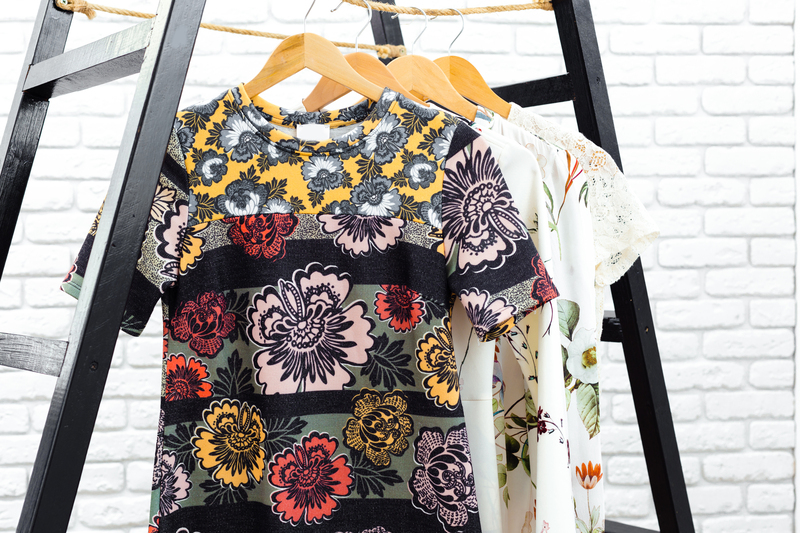Turn Forgotten Items into Functional Works of Art with Upcycling
In our fast-paced, consumer-driven world, it's not uncommon to accumulate items that eventually become obsolete or forgotten. Instead of tossing these belongings in the trash, why not breathe new life into them? Upcycling is the art of transforming forgotten items into functional works of art, blending creativity, sustainability, and utility in one exciting process. In this comprehensive guide, you'll discover how to turn discarded treasures into practical and artistic decor for your home--benefiting both your wallet and the planet.
What Is Upcycling and Why Does It Matter?
Upcycling is a creative process that goes beyond traditional recycling by reimagining and repurposing unused materials or objects into something of higher value or functionality. Unlike recycling, which often breaks items down into their base materials, upcycling preserves and transforms the original structure, giving forgotten items a second chance to shine.
The Growing Importance of Upcycling
- Environmental Impact: Upcycling helps reduce landfill waste and conserves natural resources by extending the lifecycle of possessions.
- Economic Benefits: Transforming forgotten items into useful decor or furniture saves money and can even generate income if you sell your creations.
- Personal Satisfaction: The act of upcycling is deeply rewarding--watching old objects become functional art adds unique value to your living space.
Ultimately, turning neglect into functionality through upcycling is about more than aesthetics. It's a lifestyle shift that champions sustainability, resourcefulness, and creativity.

Why Upcycle? The Transformative Power of Functional Art
Upcycling doesn't just minimize waste; it also offers an avenue for expressing your unique style. Turning forgotten items into functional art fuses practicality with personality, resulting in one-of-a-kind pieces that serve a purpose and spark conversation.
Environmental Benefits of Upcycling
- Energy Conservation: Upcycling uses less energy than manufacturing new products, lowering your carbon footprint.
- Pollution Reduction: Diverting waste from landfills reduces environmental contamination and reliance on incinerators.
- Resource Management: Upcycling emphasizes the reuse of existing materials, reducing the demand for raw resources.
Personal Advantages of Transforming Old Items into Art
- Cost Savings: Convert unused items into functional goods without spending on new purchases.
- Enhanced Creativity: Upcycling stimulates your imagination, enabling you to see the hidden potential in everyday objects.
- Customization: Your upcycled creations can be tailored exactly to your needs and style preferences.
- Storytelling: Every repurposed item tells a story--adding sentimental value to your possessions.
How to Get Started: Essential Upcycling Techniques
Ready to turn forgotten items into stunning, functional works of art? Here are some foundational upcycling techniques to get you started:
1. Furniture Makeovers
Old chairs, tables, or dressers can be sanded, painted, and embellished for a fresh new look. Add stencils, geometric patterns, or decoupage for a personal touch. For example, turn an outdated wooden ladder into a chic bookshelf or transform a vintage suitcase into a quirky side table.
2. Textile Transformation
Repurpose unused fabrics, curtains, or clothes into cushion covers, tote bags, or patchwork quilts. Even worn-out jeans or t-shirts can be cut into strips and woven into beautiful, handmade rugs.
3. Creative Lighting
Turn glass jars, bottles, or tin cans into unique light fixtures. String fairy lights inside empty wine bottles for an elegant centerpiece or craft pendant lamps from old colanders for a rustic kitchen vibe.
4. Wall Art and Decor
Broken frames, outdated maps, or mismatched china can become eclectic wall displays. Arrange these items in interesting compositions, or paint and embellish them for a cohesive look.
5. Garden Upcycling
Old boots, teapots, or tires can be used as charming planters. Transform wooden pallets into vertical gardens or outdoor furniture, making your green space both functional and artistic.
Inspiring Upcycling Project Ideas
Not sure where to begin? Here are some creative project ideas to help you transform forgotten household items into functional art:
1. Mason Jar Organizers
- Mount jars to a piece of reclaimed wood for a rustic bathroom or kitchen organizer
- Use them to store craft supplies, makeup brushes, or utensils
2. Pallet Shelving Units
- Disassemble old shipping pallets and reassemble the wood into custom shelving
- Sand and paint or stain for a polished finish that matches your decor
3. Suitcase Storage Benches
- Repurpose vintage suitcases into storage benches by adding legs, a hinged seat, and padding
- Perfect for entryways, bedrooms, or living rooms
4. Tire Ottomans
- Wrap an old tire with rope and attach a circular wooden top to create a durable outdoor ottoman
- Add weather-resistant cushions for comfort
5. Window Frame Picture Collages
- Turn discarded window frames into multi-photo displays
- Paint frames to match your aesthetic, inserting favorite photos or artwork behind each pane
6. Cutlery Hooks and Racks
- Bend and mount old spoons, forks, or knives to create unique hooks for keys, aprons, or towels
- Attach to upcycled wooden boards for added charm
7. Book Page Art
- Repurpose pages from damaged books as backgrounds for framed art or as wall murals
- Add hand lettering or paint for a personal touch
Tips for Successful Upcycling
While upcycling is about experimentation and discovery, a few guidelines can help ensure your creations are both functional and beautiful:
- Start with Simple Projects: If you're new to upcycling, select easy projects that require minimal tools and skills. Success will motivate further experimentation.
- Gather Quality Tools: Invest in basic equipment such as screwdrivers, sandpaper, glue guns, and paintbrushes. Having the right tools makes every project easier.
- Prioritize Functionality: Before starting, consider how the upcycled item will be used. Does it need to hold weight, resist water, or provide storage? Design accordingly.
- Embrace Imperfection: Unique textures, finishes, or marks add character and amplify the artistic value of your creation.
- Clean and Prep Items: Thoroughly clean all materials before transformation. Remove dust, old paint, or rust to ensure a professional finish.
- Plan Ahead: Sketch your designs and assemble all necessary materials. This minimizes mistakes and maximizes creative flow.
Where to Find Forgotten Items for Upcycling
If your own attic or garage has been picked clean, there are plenty of other sources for upcycling treasures:
- Thrift Stores: Old furniture, textiles, and household goods abound at bargain prices.
- Garage Sales: Spot hidden gems on weekends in your local community.
- Friends and Family: Let loved ones know about your upcycling hobby--they may have items destined for the dump.
- Online Marketplaces: Platforms like Craigslist, Freecycle, and Facebook Marketplace are often filled with giveaways or cheap finds.
- Construction Sites: Scrap wood, pallets, and windows are occasionally available with permission.
Remember to prioritize safety when sourcing materials, especially when handling items with potential hazards like broken glass, rust, or chemicals.
Upcycling Safety and Sustainability Tips
Upcycling is inherently sustainable, but keeping a few safety and environmental guidelines in mind ensures your projects are safe and green:
- Use Eco-Friendly Materials: Select water-based paints, natural finishes, and non-toxic adhesives whenever possible.
- Ventilate Workspaces: Many finishes and glues release fumes. Always work in a well-ventilated area and use protective equipment when necessary.
- Dispose of Waste Responsibly: Recycle leftover materials appropriately and avoid illegal dumping.
- Avoid Hazardous Items: Steer clear of materials containing asbestos, lead paint, or toxic chemicals unless you are trained to handle them safely.
Upcycling as a Lifestyle--Inspire, Create, Repeat!
The beauty of turning forgotten items into functional art is that it encourages a mindset of resourcefulness and continual creativity. Over time, upcycling can become an integral part of your daily routine:
- Gift Meaningfully: Handmade upcycled pieces make thoughtful, personalized gifts.
- Spark Community: Share your creations online or at local fairs, inspiring others to join the upcycling movement.
- Teach and Learn: Get children involved, or invite friends to upcycling workshops for skill-sharing and socializing.
- Document Your Journey: Photograph before-and-after transformations to track progress and build an online portfolio.

Frequently Asked Questions (FAQ) About Upcycling Forgotten Items
1. What is the difference between upcycling and recycling?
Upcycling involves creatively reusing items to make something of higher value or function, while recycling generally involves breaking items down into raw materials for remanufacture. Upcycling adds value without significant energy input, maintaining more of the original item's integrity.
2. Do I need advanced DIY skills to upcycle?
No--many upcycling projects require only basic skills. Start small, learn as you go, and gradually tackle more complex repairs or transformations as your confidence builds.
3. Can upcycled art be sold?
Absolutely! Many artisans successfully sell upcycled creations on platforms like Etsy, eBay, or at local markets. Unique, functional decor made from overlooked objects often attracts buyers seeking sustainable, original designs.
4. Does upcycling really make a difference environmentally?
Yes. Every time you upcycle an item that would otherwise end up in a landfill, you're reducing waste, saving resources, and encouraging others to embrace sustainability. When multiplied across communities, upcycling can create a lasting positive impact.
Conclusion: Unleash Your Creativity and Make a Difference
Turning forgotten treasures into functional works of art is a fun, fulfilling, and eco-friendly way to revitalize your living space while promoting sustainability. By seeing potential in discarded items, you not only reduce waste but also surround yourself with unique artifacts that tell your story. Whether you're creating organization solutions, stunning decor, or innovative furnishings, upcycling invites you to express yourself while caring for the planet. So gather those forgotten items and let your creativity soar--your next functional masterpiece is waiting to emerge!